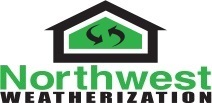Determining whether your home requires additional insulation involves understanding several factors, including the existing insulation’s performance, energy bills, and comfort levels within your home. Proper insulation is critical for maintaining a comfortable living environment and ensuring energy efficiency. By exploring the types of insulation, the role of insulation contractors, and the benefits of professional insulation installation, you can make an informed decision about enhancing your home’s insulation.
Understanding the Need for More Insulation
The need for more insulation can often be identified by several key indicators:
- High Energy Bills: One of the most apparent signs that you might need more insulation is higher than usual energy bills. Insulation helps in maintaining the desired temperature in your home, reducing the need for heating and cooling systems to work overtime. If your energy bills are consistently high, it could indicate that your home is losing heat through the walls, roof, or floors.
- Uneven Temperatures: If you notice that some rooms are significantly warmer or cooler than others, it could be a sign of inadequate insulation. Proper insulation should help maintain a consistent temperature throughout your home.
- Cold Walls, Floors, and Ceilings: The interior surfaces of your home should feel warm and dry. If touching the walls, floors, or ceilings feels cold or damp, it’s likely that insulation is insufficient.
- Ice Dams: In winter, ice dams forming on the roof can indicate heat escaping from your home due to inadequate insulation, especially in the attic.
Types of Insulation
There are several types of insulation, each suitable for different areas of your home and offering various benefits:
- Fiberglass Insulation: This is one of the most common types of insulation, made from fine glass fibers. It’s suitable for insulating walls, attics, and floors.
- Cellulose Insulation: Made from recycled paper products, cellulose insulation is environmentally friendly and effective for insulating attics and walls.
- Spray Foam Insulation: Spray foam expands to fill gaps and cracks, providing an excellent air seal. It’s ideal for sealing leaks around windows, doors, and in attic spaces.
- Rigid Foam Board Insulation: This type of insulation is often used for insulating basements, crawl spaces, and exterior walls. It provides high insulation value with minimal thickness.
- Reflective Insulation: Reflective insulation is best suited for reducing cooling costs in hot climates. It reflects radiant heat away from your home.
Understanding the specific needs of your home and the benefits of each insulation type is crucial in deciding the best approach to enhancing your home’s insulation.
Insulation Contractors and Professional Installation
While DIY insulation projects can be tempting, hiring professional insulation contractors offers several advantages:
- Expertise and Experience: Insulation contractors have the knowledge and experience to recommend the best type of insulation for your home. They can identify areas with inadequate insulation and provide solutions tailored to your needs.
- Proper Installation: Professional insulation installation ensures that the material is installed correctly and efficiently. Proper installation is crucial for maximizing the effectiveness of insulation and achieving the desired energy savings.
- Safety: Insulating materials can be hazardous to handle. Professionals are trained to install insulation safely, reducing the risk of injury or property damage.
- Time and Cost Efficiency: While the initial cost of hiring a contractor might seem high, professional installation can be more cost-effective in the long run. Correctly installed insulation can save you money on energy bills and prevent costly repairs due to improper installation.
Evaluating Your Home’s Insulation
To determine if you need more insulation, consider conducting a home insulation audit. Many utility companies offer this service for free or at a reduced cost. An insulation audit can reveal areas where insulation is lacking and recommend improvements.
Additionally, visually inspecting your attic, walls, and floors can help identify areas where insulation might be inadequate. Look for uneven insulation, gaps, or areas where the insulation has settled or degraded over time.
Conclusion
Determining whether you need more insulation involves assessing your home’s current insulation performance, understanding the types of insulation available, and recognizing the value of professional insulation installation. By addressing areas with inadequate insulation, you can enhance your home’s comfort, reduce energy bills, and contribute to a more energy-efficient and sustainable living environment. Insulation contractors play a vital role in this process, offering the expertise and experience necessary to ensure that your home is properly insulated for optimal performance.
- Attic Insulation Portland OR
- Attic Insulation Tualatin OR
- Attic Insulation West Linn OR
- Crawl Space Cleaning Beaverton OR
- Crawl Space Cleaning Tualatin OR
- Insulation Installation Beaverton OR
- Insulation Installation Gresham OR
- Insulation Installation Hillsboro OR
- Insulation Installation Lake Oswego OR
- Insulation Installation Milwaukie OR
- Insulation Installation Newberg OR
- Insulation Installation Oregon City OR
- Insulation Installation Portland OR
- Insulation Installation Salem OR
- Insulation Installation Sherwood OR
- Insulation Installation Tualatin OR
- Insulation Installation West Linn OR
- Insulation Installation Wilsonville OR
- Mold Remediation Lake Oswego OR
- Mold Remediation Oregon City OR
- Mold Remediation Portland OR
- Mold Remediation Tualatin OR
- Mold Remediation West Linn OR
- Vapor Barrier Installation Beaverton OR
- Vapor Barrier Installation Hillsboro OR
- Vapor Barrier Installation Lake Oswego OR
- Vapor Barrier Installation Portland OR
